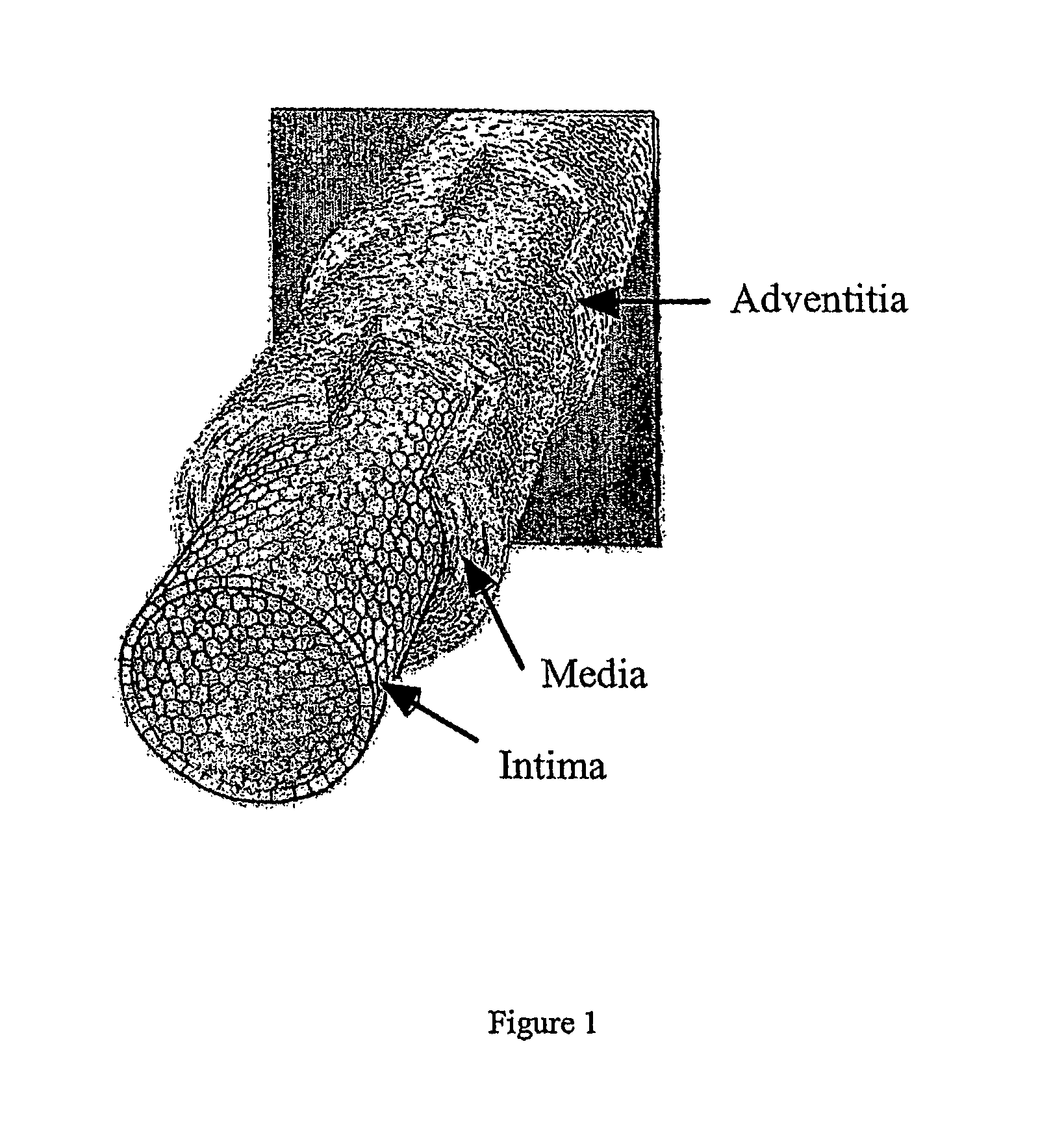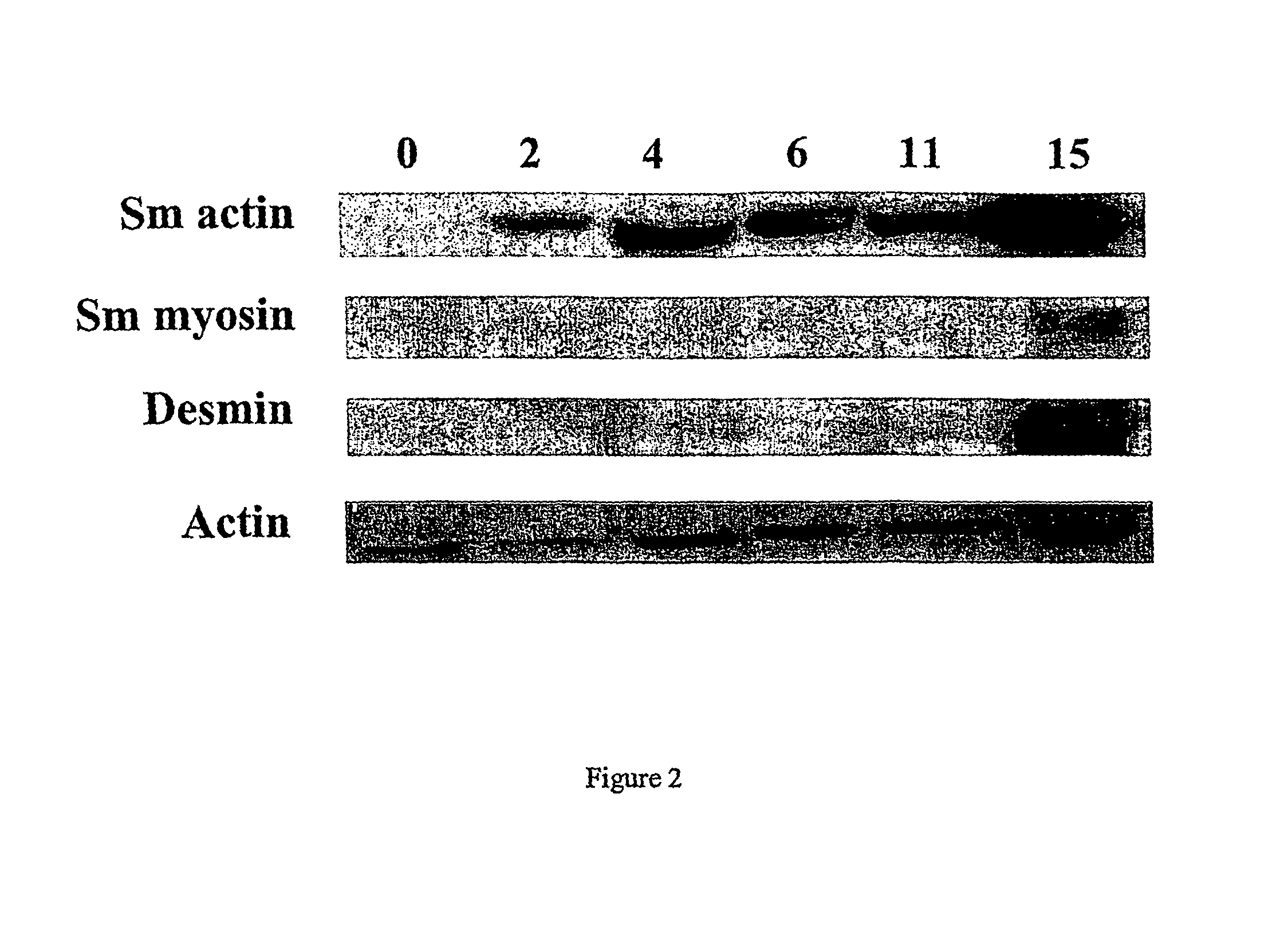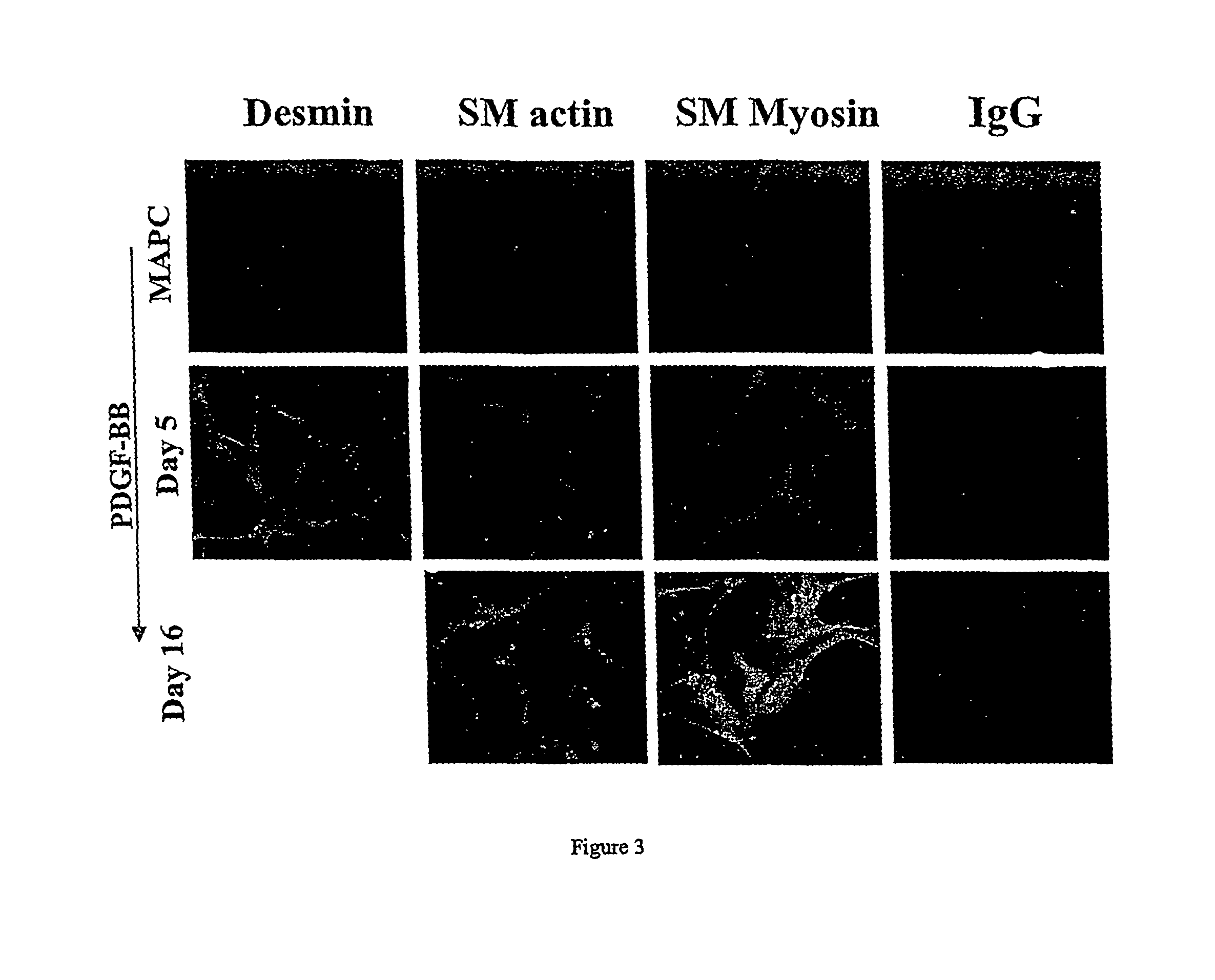Engineered blood vessels
a technology of blood vessels and blood vessels, applied in the direction of prosthesis, skeletal/connective tissue cells, biocide, etc., can solve the problems of lack of ec lining on the lumen of the graft, lack of burst strength of the construct, and insufficient veins for bypass surgery
- Summary
- Abstract
- Description
- Claims
- Application Information
AI Technical Summary
Benefits of technology
Problems solved by technology
Method used
Image
Examples
example 1
Culture and Differentiation Conditions for MAPCs
MAPC Isolation and Culture Conditions
[0144]Bone marrow (BM) was obtained from 55 healthy volunteers donors (age 2-50 years) after informed consent using guidelines from the University of Minnesota Committee on the use of Human Subject in Research. MAPCs were generated as previously described (Furcht et al.). Briefly, BM mononuclear cells (BMMNC) were depleted of CD45+ and glycophorin-A+ cells using micromagnetic beads (Miltenyii Biotec, Sunnyvale, Calif.). CD45− / GlyA− cells (5×103 cells) diluted in 200 μL expansion medium comprising 58% low-glucose Dulbecco's minimal essential medium, low-glucose formulation (DMEM-LG) (Gibco-BRL, Grand Island, N.Y.), 40% MCDB-201 (Sigma Chemical Co, St Louis, Mo.), supplemented with 1× insulin-transferrin-selenium (ITS), 1× linoleic-acid bovine serum albumin (LA-BSA), 10−8M Dexamethasone, 10−4M ascorbic acid 2-phosphate (all from Sigma), 100 U penicillin and 1,000 U streptomycin (Gibco) and 10% FCS (Hy...
example 2
Formation of a Blood Vessel by Incorporation of Cells in a Matrix
[0152]In this Example, a blood vessel is engineered by incorporation of SMCs and ECs in a fibrin gel tube with VEGF stimulus in the lumen.
[0153]Three solutions are required to make a fibrin gel: fibrinogen solution, cell suspension, and thrombin solution. The fibrinogen solution is composed of 5 mg / mL of fibrinogen in 20 mM HEPES buffered saline while the thrombin solution is 150 units of thrombin in 1% water by volume and 9% saline by volume in serum free culture medium with a 0.004 M CaCl2 catalyst. The cell suspension is at six times the final concentration; therefore, the suspension is at 1.5×106 cell / mL to have a final concentration of 0.25×106 cells / mL. The fibrinogen solution, the cell suspension, and the thrombin solution are mixed at a ratio of 4:1:1 by volume and gel in less than one hour at 37° C.
[0154]The mold to form a tubular fibrin gel for co-culturing cells is composed of a tubular porous polyethylene m...
example 3
Characterization of Layered Circumferential Vascular Structure
[0162]After culturing the constructs from Example 2 on the agarose-coated porous polyethylene tube for 7 days, ECs were mainly located close to the lumenal surface (FIG. 8), however the cells were still somewhat disorganized, as seen in FIG. 9. After 3 weeks of culture, the cells began to align and form prototypical layers, as detected by vWF staining, LDL uptake, and DAPI staining (FIG. 10). ECs were seen close to the lumenal surface. FIG. 11A show a cross-section of the entire construct at lower magnification immunostained for α-smooth muscle-actin (red), collagen type IV (green), and DAPI (blue). SMCs populated the interior of the construct and ECs were absent from the outer surface, which was surrounded by medium that was not supplemented with VEGF, indicating that ECs can be selectively localized to surfaces after incorporation by presenting a concentration gradient of VEGF, presumably by a chemomitoattractant respon...
PUM
| Property | Measurement | Unit |
|---|---|---|
| time | aaaaa | aaaaa |
| diameter | aaaaa | aaaaa |
| pore sizes | aaaaa | aaaaa |
Abstract
Description
Claims
Application Information
 Login to View More
Login to View More - R&D
- Intellectual Property
- Life Sciences
- Materials
- Tech Scout
- Unparalleled Data Quality
- Higher Quality Content
- 60% Fewer Hallucinations
Browse by: Latest US Patents, China's latest patents, Technical Efficacy Thesaurus, Application Domain, Technology Topic, Popular Technical Reports.
© 2025 PatSnap. All rights reserved.Legal|Privacy policy|Modern Slavery Act Transparency Statement|Sitemap|About US| Contact US: help@patsnap.com



